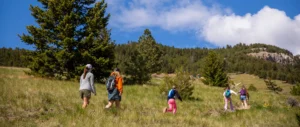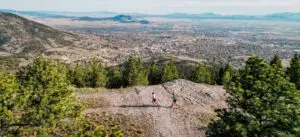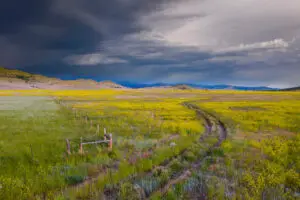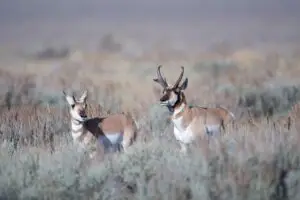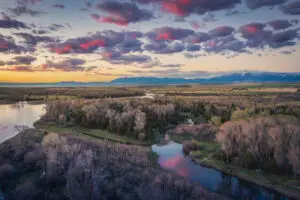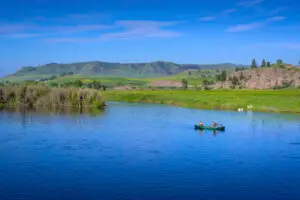A growing number of land transfer bills in Montana and across the West could, among other losses, make it harder for wildlife to access the habitat and other resources they require to survive. Wildlife need to move constantly – to find food, water, safety, places to rear their young, and cover. Larger mammals such as mule deer, elk, and pronghorn may travel 100 miles or more throughout the year to escape deep snow, graze on summer pasture, and locate water in late summer.
The degree to which animals can travel freely across the landscape is what biologists call connectivity. One benefit of the land protected by Prickly Pear Land Trust is to keep the landscape permeable to wildlife movement and maintain connectivity. A pronghorn herd, for instance, has a far easier time traveling from the Bureau of Land Management’s Scratchgravel Hills south to grasslands in the Helena-Lewis Clark National Forest if it can move through a single ag operation, like PPLT’s recently acquired 1,500-acre Birdseye Ranch, instead of negotiating dozens of 10-acre housing sites, each surrounded by wildlife-blocking fences.
Across Montana, land trusts and agencies like Montana Fish, Wildlife & Parks purchase key conservation easements from willing sellers that allow for the critical seasonal movement of wildlife. These and other protected private lands, totaling 6 million acres in Montana, are vital for maintaining seasonal wildlife movement while protecting working ranch and farm operations.
Yet even more important to wildlife are the 30 million acres of federal public lands linked by many of these private properties. Mountains, forests, prairies, and foothills are the essence of Montana. Managed by the U.S. Forest Service, Bureau of Land Management, Bureau of Reclamation, and other federal agencies, these lands create scenic vistas and countless places for people to enjoy, and provide the food, water, shelter, and cover that wildlife need to survive.
Though federal lands are overwhelmingly popular with hunters, hikers, campers, wildlife advocates, and off-road vehicle riders, a growing movement aims to sell those lands or transfer ownership and management to western states. During the recent legislative session in Montana, House Joint Resolution 24 supported Utah in that state’s lawsuit against the United States. Part of the bill’s wording claimed that the federal government “unconstitutionally” manages approximately 8 million acres of “unappropriated” public lands in Montana, thereby “depriving Montana of its sovereignty” and denying “Montana equal statehood and representation.”
Conservation groups and land trusts, including PPLT, have denounced HJ24 and other moves to transfer federal lands to state authority. They point out that transferred lands in Nevada and other western states have been sold to developers and other private interests to raise state revenue, often because the states don’t have the funds or staff to manage the lands.
“Land trusts prioritize conservation efforts that buffer public lands because that’s where we can have the maximum impact for wildlife, water, and open space,” says Mary Hollow, PPLT executive director. “If even a small percentage of Montana’s public lands become private lands, it could decimate 30 years of private land conservation.”
In January 2025, the U.S. Supreme Court temporarily set back Utah’s effort to bring federal land and resources under state control. Still, some Montana lawmakers have vowed to continue fighting to gain state control over several million acres of federal land.
Hollow says, “To maintain healthy wildlife populations, abundant outdoor recreation, and the high quality of life we have in this area, federal lands need to stay in federal hands.”
Tom Dickson is a longtime editor and writer based in Helena, Montana, known for his extensive work in outdoor and conservation journalism. He recently retired after 23 years as editor of “Montana Outdoors,” the magazine of Montana Fish, Wildlife & Parks.

